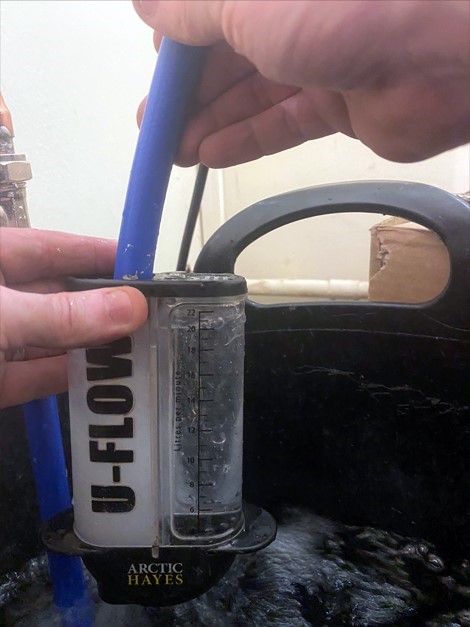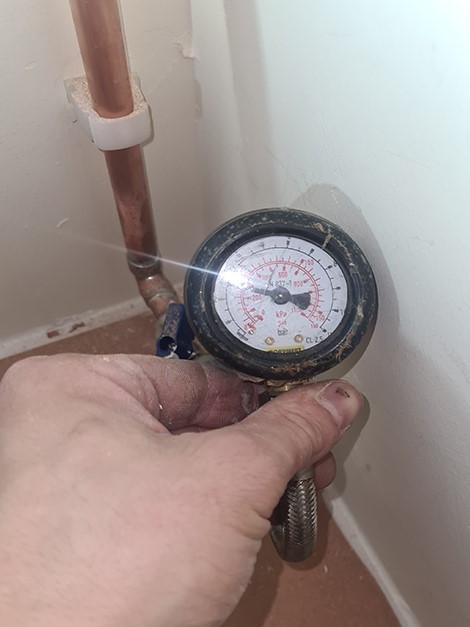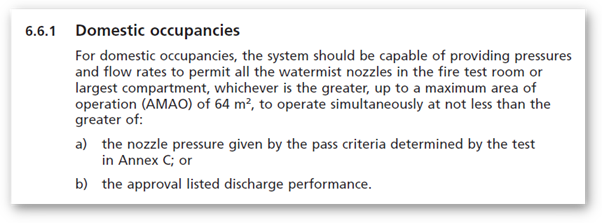6.8.4 Mains Water Supplies
A suitable water supply should be identified at an early stage to avoid unnecessary work at a later stage. The minimum mains dynamic pressure and flow should be ascertained at a time of peak demand at the earliest opportunity to ensure that there will be sufficient pressure and flow available to allow the system to perform as designed. Where there is concern about a mains water supply, a data logger may be used to establish a record of the standing pressure.
It is preferable to connect Automist to the mains water supply connection that serves both the watermist system, and the domestic or residential occupancy supply, over a stored water supply (dedicated tank), as it is more robust. This is because a mains supply is in constant occupant use, and therefore if a fault develops, it is more likely to be addressed.
Typically, the kitchen sink cold tap would be supplied from the incoming mains water supply or straight from a cold-water storage tank in the loft and that should have the highest flow and pressure.
Automist must be connected to a reliable water supply, which delivers 8 litres per minute (lpm) flow at a minimum of 1.5 bar (150kPa) and a maximum of 16 bar (1.6 MPa) static pressure at the point of connection. The pump only requires only 6 lpm and 1 bar pressure, so a safety margin is embedded in this requirement. This is a deviation from clause 6.8.4.2 b) in BS 8458:2015 which recommends an additional 25 litres per minute for domestic occupancies which is a relevant rationale only for traditional mechanical water suppression systems which consume significant water flow as a proportion to total demand.
The minimum guaranteed UK Supply by the Office of Water Services (OFWAT) is 9 lpm, and the typical flow between 10 - 25 lpm. As Automist does not require more water than expected by a typically household appliance, and therefore, you are not required to inform the water undertaker.
For a single domestic dwelling with a low flow between 8- 12 lpm repeat the measurement above with either the bath tap fully open or the power shower on. Verify the supply for Automist can deliver over 6 lpm whilst this is occurring, this exercise is to ensure adequate flow is available during peak demand.
Where the mains water supply serves more than one dwelling, the mains should be capable of providing the flow and pressure at the point of connection for each system in accordance with the recommendations above of simultaneous peak demand from all the dwellings it serves.
If the mains pressure and flow is insufficient the water main can be boosted using a ‘mains boost system’ with a tank. An outside pipe diameter of less than 28mm is a good indicator that a mains boost system may be required. Mains boosting systems are designed to improve flow rates to all direct on mains appliances in the home. The objective is to improve the overall resilience of the water supply to the residence rather than just the supply for Automist only.
Water flow pre-installation test:

Water pressure pre-installation test:

The Automist fire pump is a positive displacement pump designed to discharge a constant flow of 6 litres per minute because only one Automist spray head will ever discharge at a fire, as this is electronically controlled. The Assumed Maximum Area of Operation (AMAO) is always a single spray head, and therefore the pump only needs to supply the flow and pressure for that one spray head.
Competing traditional sprinklers, by contrast, are triggered by a more basic mechanism and must be designed to cope with three or more heads activating at once. Any nozzle near the fire in large rooms (over 32m2, or above 5.1m in width) could activate, even if the system can't cope with that many heads running at once so must be considerate of AMAO:


